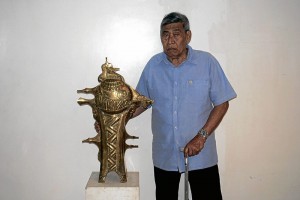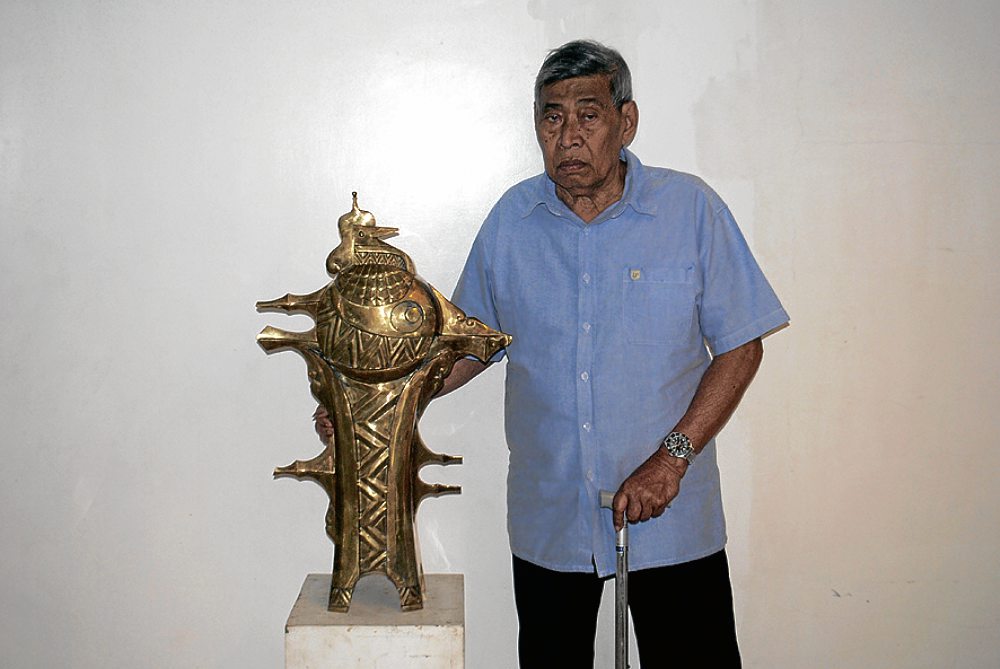
In the Lifestyle Sunday interview by Elizabeth Lolarga, “Why Is Art Forgery on the Rise Again?” (Dec. 9), Ramon “Richie” Lerma of Salcedo Auctions and Ateneo Art Gallery attributed the rise in art forgery to new collectors entering the scene and being introduced by “unsuspecting friends to fly-by-night art dealers or substandard galleries without knowing any better.”
He warned against spurious authentication certificates and called on collectors to consult the artists themselves or, if the artist is dead, to seek expert opinion.
Here are some reactions to that interview.
“I remember, during the ’60s, there were small paintings in Mabini being passed off as my works. I discovered this by chance. I learned that some Mabini artists copied my paintings from a book on Philippine art and sold them to foreigners who frequented that area in Manila. They believed it was okay to fake my paintings because, anyway, these were just being offered as ‘souvenirs’ to foreigners. Pinagsabihan ko sila, at sinabi ko na kakasuhan ko sila ’pag hindi sila tumigil. We should be aware of our rights as artists.
“I believe it is very important for artists, while they’re still alive, to authenticate their own works and properly document them. I would advise new collectors to go to reputable art galleries and well-known, expert art collectors and source their opinions about the works they would like to acquire.”—Abdulmari Asia Imao, National Artist for the Visual Arts
Auction houses victimized
“When I was president of the Art Association of the Philippines from 1991 to 2000, my board and I were vigilant in protecting the intellectual-property rights of artists. We were able to expose through media cases of fakes and forgeries—of a painting of Alfredo Carmelo and of sculptures of National Artist Napoleon Abueva, among others.
“So I totally agree with Richie that buyers should beware, especially when buying works of dead masters from reputable auction houses, since even they (like Christie’s) have been victimized, offering fake Amorsolos and Manansalas, for example. Fortunately they were pulled out in time before the auction.”—Ramon Orlina, sculptor
Uphold intellectual property law
“The bottom line is for the art community to unite because this is a disease that will destroy the momentum of whatever progress we are gaining in art, locally and internationally.
Another important move is to institutionalize the copyright law. Transparency in dealings regarding the artwork can be a deterrent to forgery. Respecting the copyright law is a process by which seller and buyer will always go back to the source (the artist). In this case, the provenance is established and verified.—Renato Habulan, painter and teacher
Self-serving
“I find it hard to comment on an interview that is very informative (he obviously knows what he’s talking about), but seemingly self-serving.
“Buyer beware” is an old and timeless concept. His thoughts on how artworks, particularly by the masters, are forged and foisted on unsuspecting buyers are very useful, and collectors will be wise to take heed. That there are unscrupulous dealers and galleries is also true, as it is for practically all fields.
“But phrases like ‘There is no level playing field when it comes to matters of taste,’ and repeatedly implying the need for ‘expert’ validation of what is and what is not art, are elitist, somewhat presumptuous, and ultimately unprovable.”—lawyer Gigo Alampay, executive director of the Center for Art, New Ventures and Sustainable Development (Canvas)
Stricter laws needed
“The high prices of genuine art have prompted a host of unscrupulous dealers to peddle fakes and forgeries to make a quick buck. I mean, with most of the prices of works by the masters running in the hundreds of thousands, if not millions, of pesos, these malicious art vendors find art forgery worth the risk. After all, their best-case scenario is making millions from a fake painting which no one will ever discover as a fake; and the worse case, should the item they sold be proven to be fake (which, by the way, is quite hard to do especially when the artist has passed away) is that they will just have to say sorry and return the client’s money. No one is penalized with a fine, much less sent to jail. I really believe we should have stricter laws regarding this crime.
“On the other hand, many customers have fallen victim to these ‘inventive’ dealers due to their ignorance or misguided notion of what the real thing looks like. They are either impressed by certificates of authenticity (which are easily forged too and sometimes issued wantonly by certain so called experts in the field) or lured by the relatively “bargain” selling price of an artwork.
“My advice: Avoid art dealers without any gallery affiliation. Buy only from reputable galleries such as Finale, West, Blanc, Duemila, Paseo, Crucible and the like. Do not succumb to the temptation of buying a supposedly genuine artwork for less. Verify the provenance and certificate of each artwork before you buy. Do your research in Philippine art by reading books, visiting museums and galleries and attending lectures and art fairs. Lastly, seek the advice of honest experts, not those with vested interests.”—Jonathan Sy, owner of Galllery Big, one of the founders of Manilart: Contemporary Art Fair
Underground economy ruining art scene
I basically agree with Richie’s statements. I would like to add the other reasons art forgery remains unchecked.
1. Those who purvey forgeries intentionally are not being punished.
2. Those who were duped into buying inauthentic artworks would rather suffer in silence rather than expose their ignorance. For as long as the equivalent of what they paid is restored, they will refuse to be bothered with going after the culprit; they will just rather forget about their loss than rock the boat.
3. There is a proliferation of private dealers who are clueless and become unwitting instruments in purveying fake works. Underground economy is rampant in the art scene.
4. When the fake artwork is unmasked it is not traced back to the manufacturer and the mastermind. It is just quietly returned. Then as quietly, the fake artwork finds its way in the market again later.
5. For as long as there are buyers who would rather buy from fly-by-night dealers because they offer cheaper rates than from established galleries of good reputation, there would always be a good market for forgeries.—Norma Liongoren, Liongoren Gallery












































